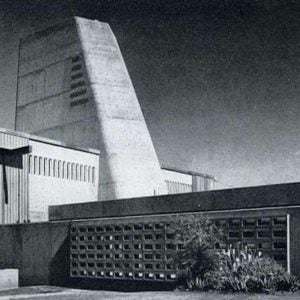 Russia’s Mining & chemical Combine (MCC – part of Rosatom) in Zheleznogorsk (Krasnoyarsk) has completed all R&D on a project for a molten salt research reactor (IZhSR – Issledovatelskovo Zhidko Solevovo Reaktora) MCC Director Dmitry Kolupaev told Rosatom Director General Alexey Likhachev Rosatom Alexei Likhachev during his visit to the enterprise that the key stages had been completed. A preliminary design has been developed that describes the fundamental decisions required for the physical launch of the IZhSR. This was achieved in cooperation with many other Russian organisations.
Russia’s Mining & chemical Combine (MCC – part of Rosatom) in Zheleznogorsk (Krasnoyarsk) has completed all R&D on a project for a molten salt research reactor (IZhSR – Issledovatelskovo Zhidko Solevovo Reaktora) MCC Director Dmitry Kolupaev told Rosatom Director General Alexey Likhachev Rosatom Alexei Likhachev during his visit to the enterprise that the key stages had been completed. A preliminary design has been developed that describes the fundamental decisions required for the physical launch of the IZhSR. This was achieved in cooperation with many other Russian organisations.
Outline of the project is the next step towards working out key technological solutions for the transmutation of minor actinides (MA), mastering molten-salt technology and then creating a full-scale reactor, which will burn MA – highly radioactive waste produced during used fuel reprocessing, which emit a large amount of heat and have a long half-life. This will reduce the hazard and also reduce the amount of waste to be disposed of in deep geological formations enabling instead near-surface waste disposal. The reactor will be sited in the underground facilities of MCC.
“Our level of competence is growing with each solved problem,” said Yevgeny Vlasenko, chief specialist of the development project management team. “In support of all decisions embedded in the preliminary design, a large amount of research has been completed and continues to be carried out. Much of this is undertaken by MCC. The International Centre for Engineering Competencies at MCC develops technologies for the preparation of fluoride salts and fuel additives, verifies and certifies analytical methods for monitoring their quality, and studies the physicochemical properties of salts.
MCC is also engaged in the development of technologies for the welding of structural material – chromonickel alloy – which has not yet been used in the manufacture of reactors in Russia. An equally important area is the organisation and maintenance of work. This includes the formulation of technical requirements for concluding state contracts and targeted financing agreements with the parent customer, Rosatom. In addition, there is the distribution of tasks among contractors and divisions of MCC with supervision of their implementation, interaction with the supervisor of the federal project, the parent scientific organisation, the parent design organisation, and other project participants.
The 2023 results will be reviewed at a meeting of Rosatom’s Joint Scientific & Technical Council planned for the first quarter of the year. In 2026, MCC expects to receive a construction licence for the IZhSR, which is scheduled for launch in 2031.
The reactor will use molten salt as a coolant and/or fuel. In the IZhSR project, it is planned to use fluoride salts, with fuel additives in the form of fluorides of nuclear materials dissolved into the salts. In the future, the ZhSRs are seen as a way to significantly reduce the storage period of radwaste in the closed nuclear fuel cycle due to the transmutation of MA. The period of potential danger can be reduced from 10,000 years to 300. Fuel from light water reactors (VVERs) will be processed, uranium and plutonium will be reused, MA will be burned returned to consumers, minor actinides will be burned, fission products will be placed for temporary storage pending disposal. In the energy sector of the future, VVER and fast reactors will become the main energy suppliers, while fast reactors will produce fuel for themselves and for VVERs, while ZhSRs will burn minor actinides.
Image: Preliminary design of the molten salt research reactor (courtesy of Rosatom)






